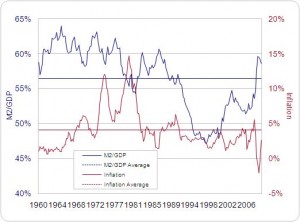The WSJ’s Real Time Economics page led me to THIS WEBSITE which is a pretty cool project. According to the website…
Inflation is a significant measurement for the economic health of countries around the world, but rates are often reported weeks after data is collected. To address this problem, Professors Roberto Rigobon and Alberto Cavallo at MIT Sloan School of Management have launched the Billion Prices Project (http://bpp.mit.edu), the first Website to publish daily price indexes and provide real-time inflation estimates around the world. Over the past three years, the team developed a methodology to systematically collect prices of items sold by online retailers and compute inflation statistics on a daily basis. More than 5 million prices are monitored every day from categories such as food and beverages, household products, electronics, apparel, and real estate. While the project tracks prices in more than 50 countries, it currently publishes data for a smaller subset that includes the U.S. and U.K. as well as Argentina, Australia, Brazil, Chile, China, Colombia, France, Italy, Turkey, and Venezuela.
If you’re a reader of ‘rate update‘ you know that inflation is the primary driver of mortgage rates so I might start checking into the BBP price index as a part of my research.


